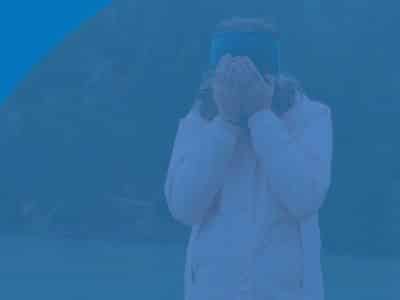Oakland’s current population is just a little over 400,000 and it is considered the 8th largest city in California. Home to the Golden State Warriors and the Oakland Raiders, Oakland is undoubtedly one of the cities with the richest sporting heritage.
Underneath its happy, fun, and youthful exterior is a city struggling with substance use disorder.
The problem, however, is not only occurring in Oakland but in the entire San Francisco Bay area and in across the nation.In fact, earlier this year, videos emerged of homeless people visibly shooting up on the floor, lobbies, and even on the trains of BART.
Common Abused Drugs in Oakland, CA
In a 1984 news article published by the New Your Times, it was revealed that Oakland has long been battling to end drug abuse and the consequent drug-related violence experienced by the citizens in the city. In the same article, it is said that the citizens of Oakland are joining forces to reclaim their neighborhoods from drug users and drug traffickers.
Fast forward to the year 2017, despite the dedicated efforts of Oakland’s predecessors, substance use disorder is still a rampant problem in the city. Now, it has become more complicated with the drug issue being intertwined with the issue of homelessness. In an article published by The San Francisco Chronicle, it was revealed that the city government’s effort to help their homeless citizens pick themselves up is by providing basic service to homeless camps situated on Magnolia and 35th streets.
While helping 39 homeless people, they found out that most of them are addicted to heroin. The officials were shocked by the extent of the problem. They ended up picking used syringes and needles piling up in bathrooms and trash bins.
Recent Statistics on Drug Use in Oakland, CA
- According to a 2012 Partnership Attitude Study, almost 27 percent of teens believe that abusing prescriptions meds is better than using street drugs.
- Oakland also struggles with Heroin use, especially among homeless camps.
- According to a news article released by the Oakland Press, between 2002 to 2014, abuse of opioids among younger age groups declined, however, the number doubled for those over 50.
- In a report written by DrugAbuse.Gov, it was mentioned that the California Department of Justice PrescriptionDrug Monitoring Program confirmed that between 2011 to 2013, hydrocodone remained to be the most prescribed opioid drug in the different bay area counties of San Francisco. Though the volume declined from 1.8 million in 2011 to 1.6 million in 2013, it still ranked first as the most prescribed.
- In the same report released by DrugAbuse.Gov, it was likewise stated that cocaine is third in the rankings for most seized drug item, with 14.3 percent of the total report of seized drugs in the bay areas of San Francisco.
College Students Substance Use Disorder in Oakland, CA
The California College of Arts, acknowledging the fact that substance use disorder is a major concern for university students, launched extensive efforts and provided substantial resources to help students address drug and alcohol addiction.
If needed, students may have access to rehab in other cities, such as a Laguna Beach rehabilitation center.
On the other hand, Holy Names University also launched its own drug and alcohol resources center for their respective students. Their resources are so extensive to the point that they conduct their own substance use disorder-related studies to help their students understand the importance of being sober. In fact, in one of their studies, they attempted to debunk the myths of alcohol consumption, while also providing information on free Blood Alcohol Content. 27123 Calle Arroyo #2121, San Juan Capistrano, CA 92675

Our closest facility is in California

Types of Substance Use Disorder Treatment Oakland, CA
There are numerous treatment programs for substance use disorder and addiction offered by drug rehab centers in California. If your desired type of treatment is not available in Oakland, consider seeking out the details of a rehab in Eureka, CA. Some of these are the following:
- Inpatient Rehab Programs in Oakland drug rehab: This specific treatment option in drug rehab Oakland for patients suffering from addiction can be further categorized into two types — short-term inpatient treatment in rehab centers Oakland and long-term inpatient treatment in rehab facilities in Oakland. The identifiers and bases for admittance to any of these programs are the patient’s mental condition, unique needs, the severity of addiction, and personal preferences. Of course, personal preference is included because addiction is a personal journey, and being such, it would be difficult to move forward with treatment and recovery in drug rehab in Oakland if the patient is not comfortable with the treatment program he is receiving. Short-term treatment in rehab in Oaklandis ideal for those who have a less severe addiction problem and under this treatment, the patient will be required to stay in the rehab facilities Oaklandfor 3 to 6 weeks. On the other hand, as opposed to short-term treatment, long-term treatment in Oakland rehab would require a longer stay at the rehabilitation facilities in Oakland, which can last from 30 to 120 days, or more. This treatment program in Oakland rehab facilities is ideal for those who have a severe addiction problem and those who have a co-occurring mental condition.
- Partial Hospitalization in treatment centers in Oakland: This program offered in various Oakland rehab center requires the patient visit and be admitted at a hospital or a treatment center during the daytime and on certain days of the week. The purpose of this treatment is to help those who have graduated from inpatient rehab reintegrate himself with his family, circle, and community. Among the activities in this program are counseling and therapy sessions.
- 12 step rehab – The most popular recovery method, which puts more premium on surrendering yourself to a higher power in order to treat yourself
- Medical Detox near Oakland: Most of the time, detox Oakland is included in the preliminary stages of treatment in rehab Oakland. Usually, after assessment and intake and before the start of treatment, detox in Oaklandis administered by detox center Oakland to help the patient become physically and mentally ready for the proper treatment. Here, the patient might be prescribed with medications to help him cope up with the adverse effects of addictive substance withdrawal.
- Luxury Rehab in or near Oakland: More expensive than other treatment options offered in rehab center Oakland, luxury rehabs offer the best and finest amenities to the patient. Here, patients are allowed to bring their gadgets like laptops and phones so that they can still communicate with their loved ones even if they’re on rehab. Some luxury rehab centers also support programs like traveling to another country or city for treatment.
- Alcohol Treatment Centers Oakland: This treatment option offered by alcohol rehab Oakland is for those who have been struggling with alcohol abuse. Aside from attending the rehab per se, the patient, especially during aftercare, can opt to join AA meetings Oakland of AA Oakland and share experiences with other members of the Alcoholics Anonymous Oakland. During aftercare and while the patient is on the 4th step of the 12-step program, he might need to get a sponsor to help throughout their sobriety journey.
- Dual Diagnosis Rehab in or near Oakland: Dual diagnosis can either be a treatment program or a medical condition. As a treatment program, dual diagnosis aims to provide treatment for both the patient’s addiction problem and his co-occurring mental condition. These two conditions will be treated simultaneously, thus, getting deeper into discovering the root causes of the patient’s addiction. As a mental condition, dual diagnosis only means that the patient suffering from addiction is also suffering from an underlying mental disorder.
- Non-12 Step Rehab in or near Oakland: As opposed to the 12-Step Treatment popularized by the Alcoholics Anonymous, the non-12 step is a treatment program that aims to address not only the person’s addiction problem but also his overall wellness. These programs do not believe that addiction recovery is based on the grace and will of a Higher being. Instead, it promotes the idea of responsibility, acceptance, and accountability of all the patient’s life decisions.
- Outpatient Treatment in California rehab centers: Here, the patient can stay and live in his house but he attends the treatment facility to receive treatment. This treatment option is ideal for patients who graduated from inpatient rehab and still would want to continue with outpatient rehab. This is also ideal for patients who have good support system at home.
- SMART Recovery Meetings in Oakland—the treatment is rooted on scientific research that focuses more on independence and self-reliance to kick your habit
- Faith Rehab – This is for people who have a strong faith and the treatment, as well as the values, will resonate strongly with them
Payment for the Alcohol and Drug Abuse in or near Oakland, CA
Paying for rehab may be different in other centers, such as a Fremont, California, rehab center, so be sure to compare your options.
These are the various ways to pay for treatment in or near Oakland rehabilitation centers:
- Government subsidies offered by California drug rehab centers
- Loan from friends and family
- Private financing accepted by rehab centers in California
- Private Insurance accepted by rehab in California
- Public Insurance
- Rehab Scholarships
Regardless of your financial condition, know that you can get assistance for your addiction treatment. Speak to an Addiction Specialist or visit an addiction rehab today and know your options.
Medical disclaimer:
Sunshine Behavioral Health strives to help people who are facing substance abuse, addiction, mental health disorders, or a combination of these conditions. It does this by providing compassionate care and evidence-based content that addresses health, treatment, and recovery.
Licensed medical professionals review material we publish on our site. The material is not a substitute for qualified medical diagnoses, treatment, or advice. It should not be used to replace the suggestions of your personal physician or other health care professionals.







